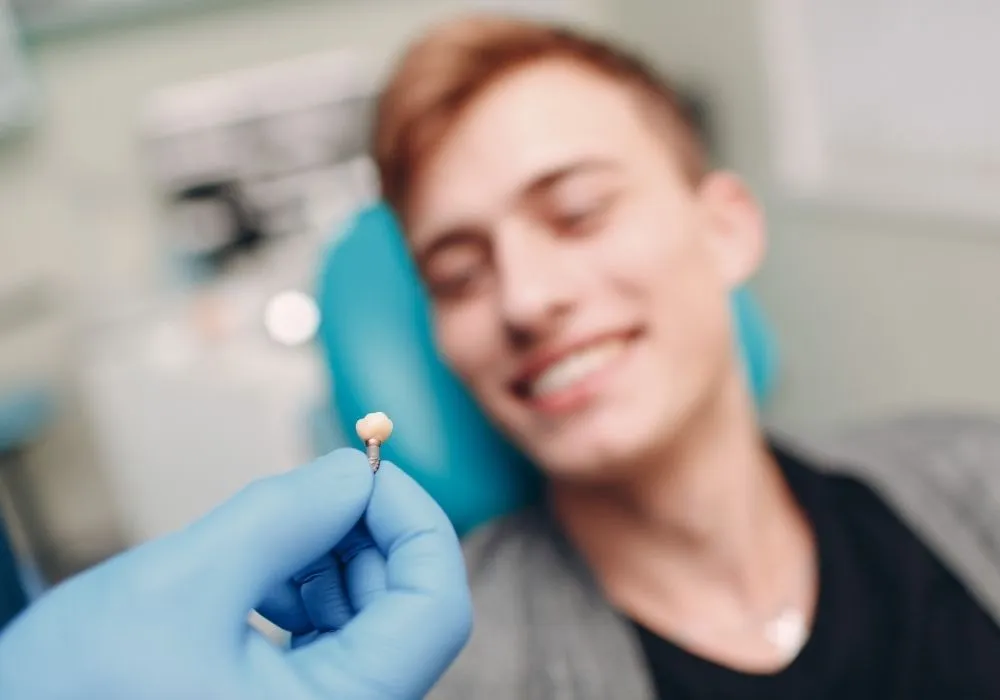HOME | FAMILY DENTISTRY
Full Arch Implants
Full arch implants are an option for patients who are missing most or all of their teeth and are seeking to reconstruct their entire mouth for restored function and appearance. Missing teeth can lead to serious dental problems and can significantly inhibit a patient’s ability to eat and speak. Full arch restoration implants are most often placed with dentures or bridges, providing patients with a restored smile.

Benefits Of A Full Arch Implant
In addition to the ability to eat and speak normally, full arch implants can reduce the risk of gum disease and other complications associated with missing teeth. Implants can help to prevent bone loss which helps to maintain patient’s facial structure. Patients missing most or all of their teeth may be considered as candidates for full arch reconstruction.
Full Arch Implant Options
Some of the most commonly used restorative materials for full arch implants treatment may include:
- Fixed Bridge: Fixed bridges are considered the most advanced treatment, because they look and feel most like natural teeth. Fixed bridges are also the most common type of dental bridges and are either made out of porcelain fused to metal or out of ceramic.
- Removable Dentures: Dentures can be removed if needed and are more affordable than bridges. Dentures are often used on patients who lack sufficient bone and tissue to support permanent devices.
Implant placement depends on the type of material chosen. The process may include two or more implants secured into the jawbone or the use of a ball or bar attachment which can be used to support multiple replacement teeth.
Full Arch Implant Procedure
During the full arch restoration procedure, several implants are secured into the jawbone to support the replacement structures. Only a few implants are needed, which reduces the severity and length of the procedure. This procedure may be performed on the upper arch, lower arch, or the entire mouth. The dentist will determine the ideal placement for each individual patient.
Dental implants are placed during a series of appointments over several months. During the first procedure, the titanium anchors or implants are placed into the jaw. Over the next three to six months, the anchors will heal and fuse to the bone, a period known as osseointegration. Small posts are attached to the implant to help provide stability for the replacement tooth. After the anchors heal, the patient is fitted for replacements, which can be installed during the next appointment. Implant surgery is performed as an outpatient procedure under local or general anesthesia.
Depending on each patient’s individual case, the entire full arch restoration process requires multiple office visits and can take up to a year to complete.
Full Arch Implant Results
Most patients find that full arch implants look and feel just like regular teeth. The strong, durable, and aesthetically-pleasing results allow patients to benefit from restored function, long-term oral health, and the confidence of a beautiful smile. Patients are able to eat, drink, and speak normally after treatment. Implants and the associated dentures, crowns, or bridges should be cared for in the same way as regular teeth. Patients should practice good oral hygiene and see their dentist on a regular basis.
Additional Resources
 5.0 Stars +200 Reviews
5.0 Stars +200 Reviews
“Dr. Goldstine and his staff demonstrate the very best of being both professional and caring. I would recommend anyone looking for a great dentist to try this office.” - C. R. (Verified Patient)
“I've been going there for 25 yrs. I have had the best dental care, ever. Never once did I consider going to another practice. All of the staff, are wonderful. Kudos to everyone.” - D. W. (Verified Patient)
“Via a referral from a friend and colleague, our family has been at the receiving end of over 40 years of extraordinary dental and hygiene care from Dr. Goldstine (father & son) and the entire Dutch Neck Dental staff. We love to smile… thank you!” - G. H. (Verified Patient)

Request Your Appointment
Exceptional Care for Every Smile

Get In Touch
Come Visit Us!
Whether you're due for a routine check-up or ready to transform your smile, we’d love to welcome you to our East Windsor office. With flexible hours, a convenient location, and a team that treats you like family, your best dental experience starts right here.
